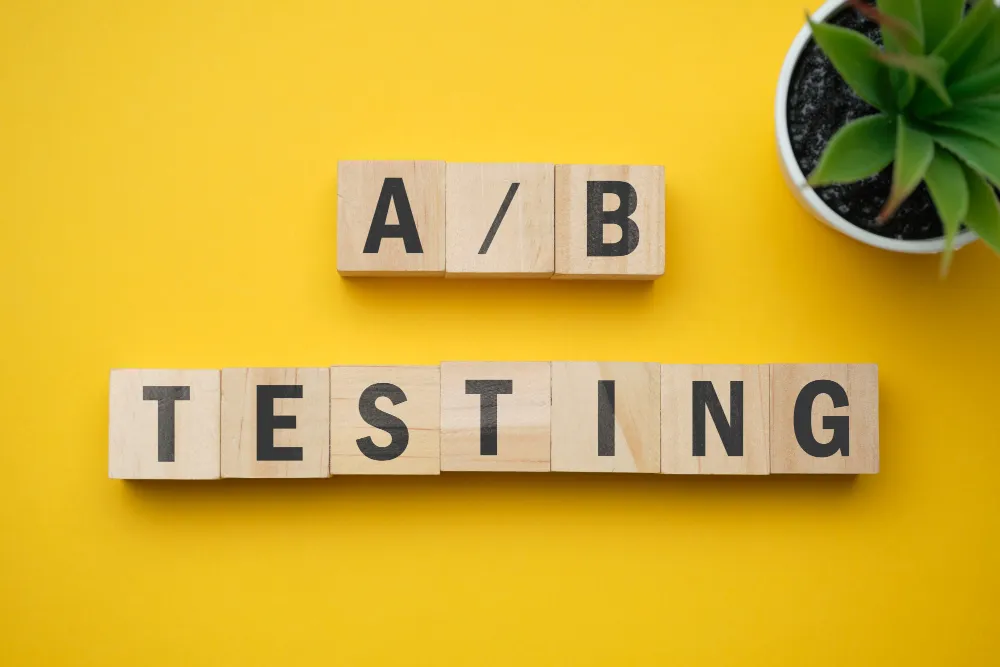A/B Testing: A Product Manager's Guide to Data-Driven Decisions
Master the art of A/B testing to make informed product decisions and optimize user experience.

Introduction to A/B Testing
A/B testing, also known as split testing, is a powerful method for making data-driven decisions in product development. It involves comparing two versions of a webpage, app interface, or marketing material to determine which one performs better. For product managers, A/B testing is an invaluable tool for optimizing user experience, increasing conversion rates, and ultimately driving business growth.
The Basics of A/B Testing
At its core, A/B testing involves the following steps:
- Identify the goal: Determine what metric you want to improve (e.g., click-through rate, conversion rate, engagement).
- Form a hypothesis: Create a theory about what change might lead to improvement.
- Create variations: Develop two or more versions of the element you're testing.
- Split your audience: Randomly divide your users into groups, each seeing a different version.
- Run the test: Show the variations to your users for a predetermined period.
- Analyze results: Use statistical analysis to determine which version performed better.
- Implement and iterate: Apply the winning version and use insights to inform future tests.

A/B testing allows you to compare different versions and make data-driven decisions.
Key Considerations for Effective A/B Testing
- Sample Size: Ensure your test has enough participants to yield statistically significant results.
- Test Duration: Run tests long enough to account for variations in user behavior (e.g., day of the week effects).
- Isolate Variables: Test one change at a time to clearly attribute results to specific modifications.
- Avoid Contamination: Ensure users consistently see the same version throughout the test.
- Consider External Factors: Be aware of seasonal trends, marketing campaigns, or other events that might affect results.
A/B Testing Example
Let's look at a simple A/B test for a call-to-action button:
Variant A
Blue button with text 'Sign Up'
Conversion Rate: 2.5%
Variant B
Green button with text 'Start Free Trial'
Conversion Rate: 3.2%
In this example, Variant B showed a 28% increase in conversion rate. However, it's crucial to ensure this result is statistically significant before making a final decision.

A well-designed A/B testing dashboard helps visualize and interpret results.
Common A/B Testing Pitfalls
While A/B testing is powerful, it's easy to make mistakes. Here are some common pitfalls to avoid:
- Testing Too Many Variables: This can make it difficult to determine which change caused the effect.
- Ending Tests Too Early: Stopping a test as soon as you see a winner can lead to false positives.
- Ignoring Statistical Significance: Make sure your results are statistically valid before drawing conclusions.
- Neglecting Qualitative Feedback: While data is crucial, don't forget to consider user feedback alongside your A/B test results.
- Not Considering Long-Term Effects: A change that boosts short-term conversions might have negative long-term consequences.
Advanced A/B Testing Techniques
As you become more comfortable with A/B testing, consider these advanced techniques:
- Multivariate Testing: Test multiple variables simultaneously to understand interaction effects.
- Segmentation: Analyze how different user segments respond to variations.
- Sequential Testing: Run a series of tests, each building on the insights from the previous one.
- Bandit Algorithms: Use machine learning to dynamically allocate traffic to better-performing variations.
Integrating A/B Testing into Your Product Development Process
To make A/B testing a core part of your product development:
- Create a Culture of Experimentation: Encourage your team to consistently question assumptions and test ideas.
- Develop a Testing Roadmap: Plan your tests in advance, aligning them with your product roadmap and business goals.
- Invest in Tools: Use robust A/B testing platforms that integrate with your analytics stack.
- Share Results Widely: Communicate test results across the organization to build support for data-driven decision making.
- Learn from Both Wins and Losses: Unsuccessful tests can often provide valuable insights about your users.

Collaborative analysis of A/B test results can lead to valuable insights and ideas for future tests.
Analyzing A/B Test Results
When analyzing your A/B test results, it's crucial to consider statistical significance. This helps ensure that the differences you observe between variants are likely due to actual differences and not just random chance.
To help you quickly check the significance of your A/B test results, I've created a simple A/B Test Calculator. This tool allows you to input your test data and get an immediate assessment of statistical significance, along with an explanation of why it matters.
Remember, while tools like this calculator can provide quick insights, for critical business decisions, it's advisable to use more robust statistical methods and consult with a data scientist or statistician.
Ethical Considerations in A/B Testing
As product managers, it's crucial to consider the ethical implications of A/B testing:
- Transparency: Be open with users about the fact that you conduct experiments.
- Data Privacy: Ensure that your testing practices comply with data protection regulations.
- User Wellbeing: Avoid tests that might negatively impact user experience or manipulate emotions.
- Fairness: Consider whether your tests might disproportionately affect certain user groups.
Conclusion
A/B testing is a powerful tool in a product manager's arsenal, enabling data-driven decision making and continuous improvement. By systematically testing hypotheses and analyzing results, you can optimize your product, enhance user experience, and drive business growth. Remember that A/B testing is not a one-time activity but an ongoing process of learning and refining.
As you embark on your A/B testing journey, start with simple tests and gradually increase complexity. Always keep your users' needs at the forefront, and use A/B testing as a means to create better, more valuable products. With practice and persistence, A/B testing can become a cornerstone of your product development strategy, leading to more informed decisions and ultimately, more successful products.
Further Reading and Tools
To deepen your understanding of A/B testing and data-driven product management, check out these related articles and tools:
Enhance your A/B testing skills with these recommended books 📚📊
Need Help with A/B Testing?
Implementing an effective A/B testing strategy can be challenging. If you need assistance in setting up tests, analyzing results, or integrating A/B testing into your product development process, I'm here to help.
Get A/B Testing Support


